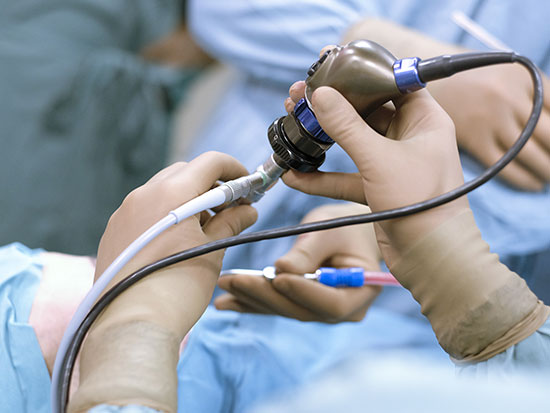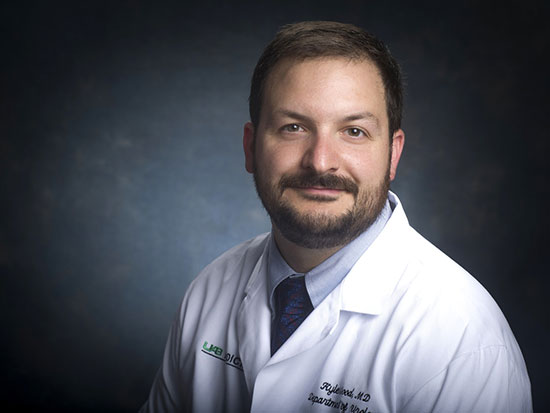 This summer, UAB’s Harbert Institute for Innovation and Entrepreneurship awarded more than $300,000 to faculty and staff with ideas for new products and processes that needed proof-of-concept or early-stage product development support to reach their commercialization potential. Eleven projects received funding of $10,000 to $50,000, made possible by the Regional Innovation Strategies program from the U.S. Economic Development Administration.
This summer, UAB’s Harbert Institute for Innovation and Entrepreneurship awarded more than $300,000 to faculty and staff with ideas for new products and processes that needed proof-of-concept or early-stage product development support to reach their commercialization potential. Eleven projects received funding of $10,000 to $50,000, made possible by the Regional Innovation Strategies program from the U.S. Economic Development Administration.
What are these projects, and who are the inventors behind them? The Reporter met with several grant recipients to learn more about their ideas and their advice to colleagues considering commercialization opportunities of their own.
This week’s project is ScopeAssist, led by Kyle Wood, M.D, assistant professor in the Department of Urology, along with co-inventor (and UAB School of Engineering alumnus) Andres Morales.
ScopeAssist is a device designed to help surgeons deal with the rigors associated with endoscopic surgeries — accumulated wear and tear that takes a toll on surgeon’s bodies and their very expensive equipment. The device attaches to a surgical bed and locks in place, serving as a “active” holder for the scope and allowing for scope protection, maneuverability and improved ergonomics for the surgeon.
|
“These scopes are the price of a new Cadillac, $30,000 to $35,000 per scope, and we are having to repair them every six to 10 cases, at a cost of $600 to $1,000 per repair. Furthermore, even though the scope is quite light, when you are doing procedures for eight to 10 hours a day, holding it becomes a major burden on your back.” |
Grant funds will allow Wood and Morales to advance their project from a digital rendering into a physical device, with a fully functional prototype anticipated in as little as three months.
How did you develop this idea?
“As a urologist, one of our main procedures is stone removal with ureteroscopy,” Wood said. “The technology has been advancing for light sources, laser technology and the optics of the scope, but minimal change has occurred in regard to the surgical field. It is a procedure that requires a surgeon and a handy assistant — a resident or a technician. Often times, we rely on these team members to hold the scope when the surgeon is doing something else, and other times the scope is placed on the patient’s body or in the drain to free up the surgeon’s hands. This can result in bending of the scope that causes damage, and potentially increases the risk of infection. These scopes are the price of a new Cadillac, $30,000 to $35,000 per scope, and we are having to repair them every six to 10 cases, at a cost of $600 to $1,000 per repair. Furthermore, even though the scope is quite light, when you are doing procedures for eight to 10 hours a day, holding it becomes a major burden on your back.
“I started looking holistically at what we could design to protect the scopes from damage, to reduce risk to the patient and to reduce the physical burden on surgeon. ScopeAssist came from this. I also realized that this could be useful for other surgical specialties.”
 Kyle Wood, M.D.
Kyle Wood, M.D.
What problem does your project solve? Are there any similar solutions on the market?
“In its simplest form, ScopeAssist is a holder for the scope that allows for ergonomic control by the surgeon. It has a locking mechanism that eliminates the need for an assistant. There are multiple devices on the market that are simply scope holders, but none are designed to be integrated into the surgical procedure with surgeon control, full resistant-free mobility in the operative field and a locking mechanism to hold the scope in place. ScopeAssist may also decrease scope damage and reduce contamination and infection, improving care for patients.”
What factors convinced you to move forward into commercialization?
“As soon as I joined the faculty here after my residency, which was four years ago, I started the process of trying to transform this from an idea into an actual design. Linking up with Andres Morales, who was completing his masters in the School of Engineering, was the key to moving forward. His engineering brilliance allowed for the idea to be converted into a functional design.”
Is this the first time you have worked with the Harbert Institute?
“Yes — the ability to work with them through this grant process, to have them understand the technology and to receive the funding to take this to the next level, has really been a turning point.”
Do you have any advice for others in the UAB community who may have an innovative or entrepreneurial project in mind?
“My main advice is to be persistent if you think you have a good idea. But recognize that ideas are a dime a dozen — it’s being able to convert those ideas into a usable product that counts, and that is where you need the expertise and support of the Harbert Institute, the hospital’s innovation center and your department. Most clinicians do not have the background to understand and navigate the commercialization process. Having the right people to support you so that you can move forward while still focusing on your clinical and research duties is crucial.”
